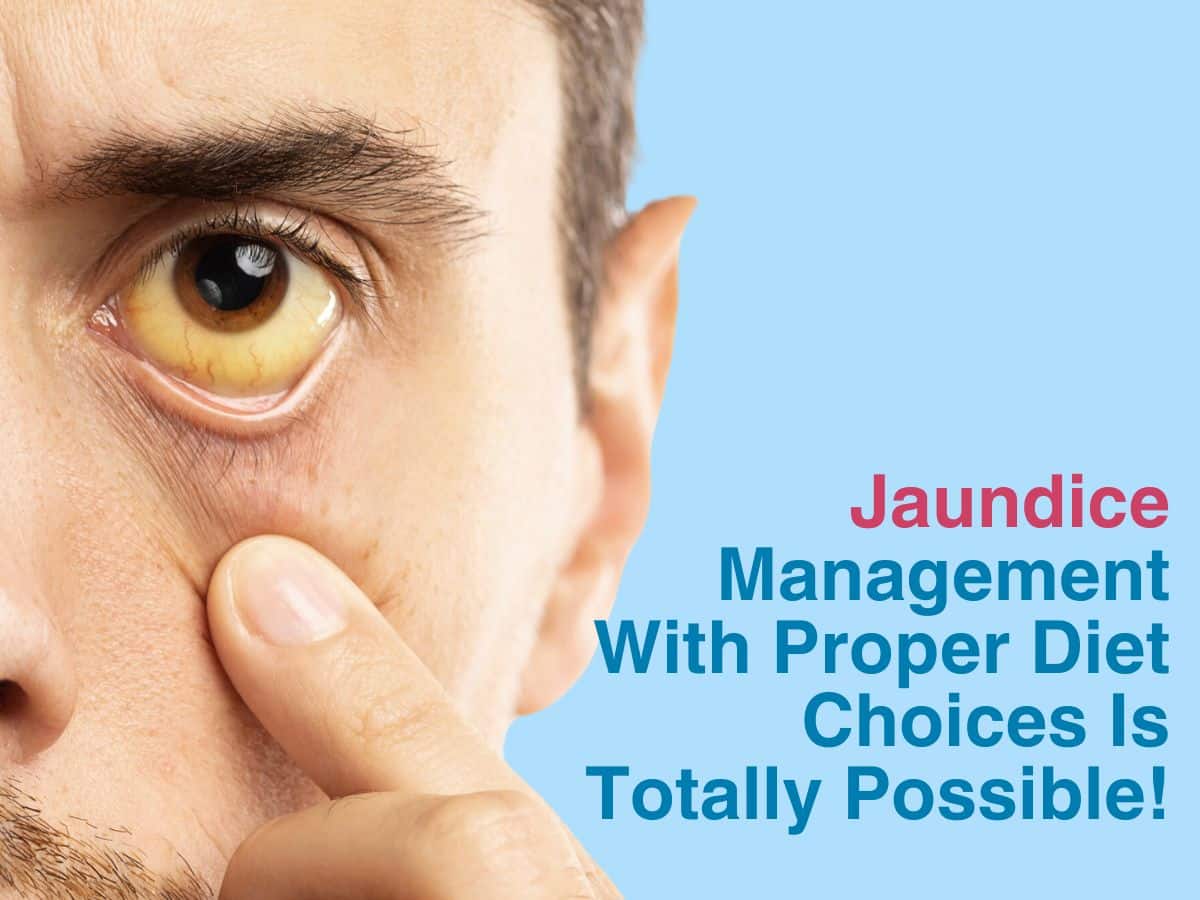
Jaundice Management With Proper Diet Choices Is Totally Possible!

Jaundice is caused by to accumulation of a yellow pigment called bilirubin in the eyes, nails or under the skin – making someone look almost like a minion (not that cute, but pretty yellow). This bilirubin is a byproduct of red blood cell breakdown, and is mostly added to the bile when produced by the liver, and then gets excreted out of the body. Liver dysfunction can also cause a change in the colour of urine or stool, extreme stomach cramps, joint ache, fatigue or even fever, and prolonged jaundice may also indicate the presence of gallstones, cancer or some other undiagnosed condition.
Common Myths About Jaundice
Jaundice as a condition has been known for millennia, and was probably first mentioned by Hippocratic physicians, or even earlier. Let us look at some common myths associated with this yellow malady:
Myth There is only one type of jaundice.
Fact Nope. There are 4 types in fact – pre-hepatic hepatocellular, post-hepatic, and neonatal jaundice respectively. Many other medical conditions can cause jaundice.
Myth Jaundice as a condition is always very serious.
Fact No. The underlying cause needs to be diagnosed, and that may be minor like gallstones or serious like cancer. It could also be due to thalassemia, malaria, etc.
Myth Bland foods are best for treating jaundice.
Fact Bland food everyday is fine, if you can handle it. But, the important thing is to always ensure to include a variety of fresh produce – fruits, vegetables, whole grains, pulses and good carbohydrates and fats in your diet every day. Protein is very crucial and often ignored.
Myth Drinking alcohol along with food is better than just downing a few shots alone.
Fact Any form of alcohol is harmful, and the liver has a fixed capacity to detoxify certain amounts of alcohol per hour. If you drink more, even with food, your liver can’t handle it and prolonged exposure can cause your liver to give up.
How Diet Impacts Jaundice Treatment And Recovery
A good, nutritious diet is essential in helping your liver recover, and to reduce the severity of any jaundice-like symptoms. Cooking methods which involve roasting, grilling, steaming or baking are all better than deep frying, and keeping tabs on how much you eat your nut butters or ghee is also important. Low fat diet does NOT mean no fat at all. Fat is needed for adequate cardiac function. Fat can also come from other sources like coconut milk, yoghurt, milk etc. One of the main issues of dealing with jaundice is the distinct lack of an appetite, or feeling extremely hungry. If someone has no appetite at all, then supplementation should be done.
Role Of Fruits And Vegetables In Dealing With Jaundice
Fresh fruits, vegetables and greens are powerhouses of antioxidants- which will help the liver detoxify compounds easier, and also help the liver feel better gradually. Any brightly coloured fruit or vegetable is your best friend then- red, yellow, orange, pink, green, purple etc. Some excellent examples include onions, garlic, tomatoes, pumpkins, oranges, lemons, carrots, beans, greens like kale, spinach, black nightshade leaves and the berries themselves, sorrel leaves, radishes, watermelons, gourds, pomegranates, bananas etc. The main thing to remember- try to incorporate seasonal produce every day. Whole grains like wheat, brown rice, or millets and oats can also help with meeting your daily carbohydrate quota.
Conclusion
If you include certain kinds of foods like coffee, tea, fibre rich fruits and vegetables, good quality fats in low quantities and ensure to make some lifestyle changes, then the magnitude of symptoms associated with jaundice get better and improve overall prognosis. But, some people may not feel like eating at all- at this point of time, so please consult a doctor who may then refer you to a dietitian. They can give you personalised diet recommendations.
Frequently Asked Questions

Dr. K. Sai Krishna
MBBS (Osmania), MD(Internal Medicine), DM(Gastroenterology)
Sr. Consultant Gastroenterologist & Hepatologist






